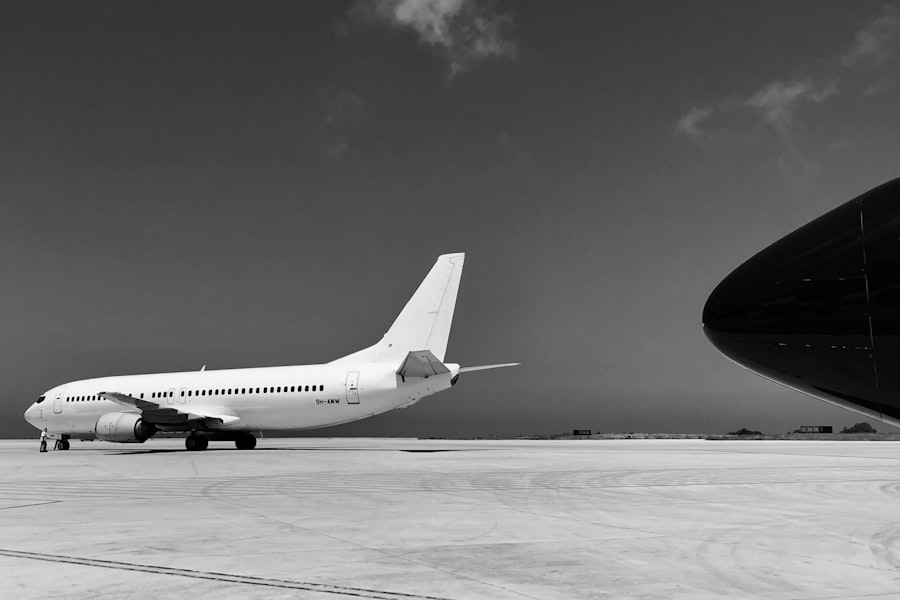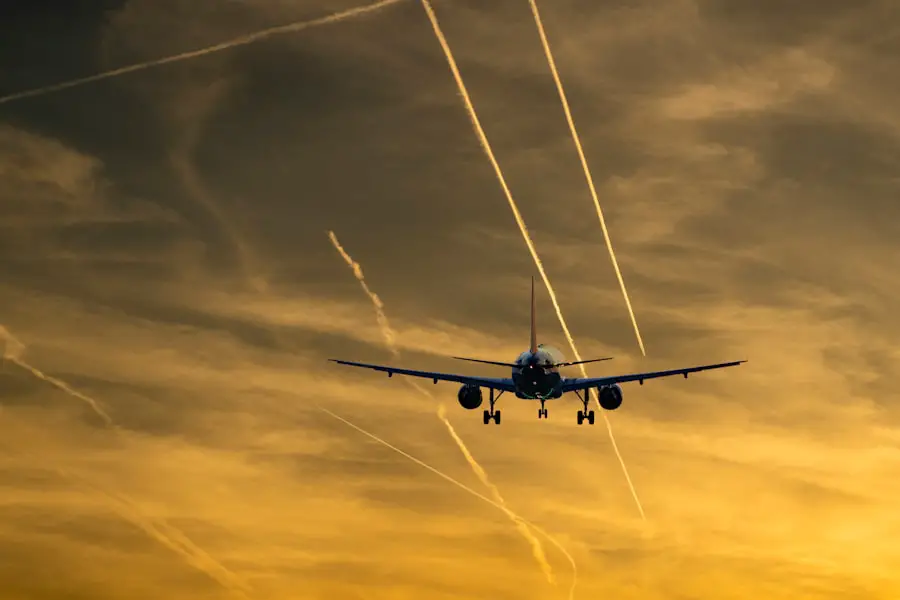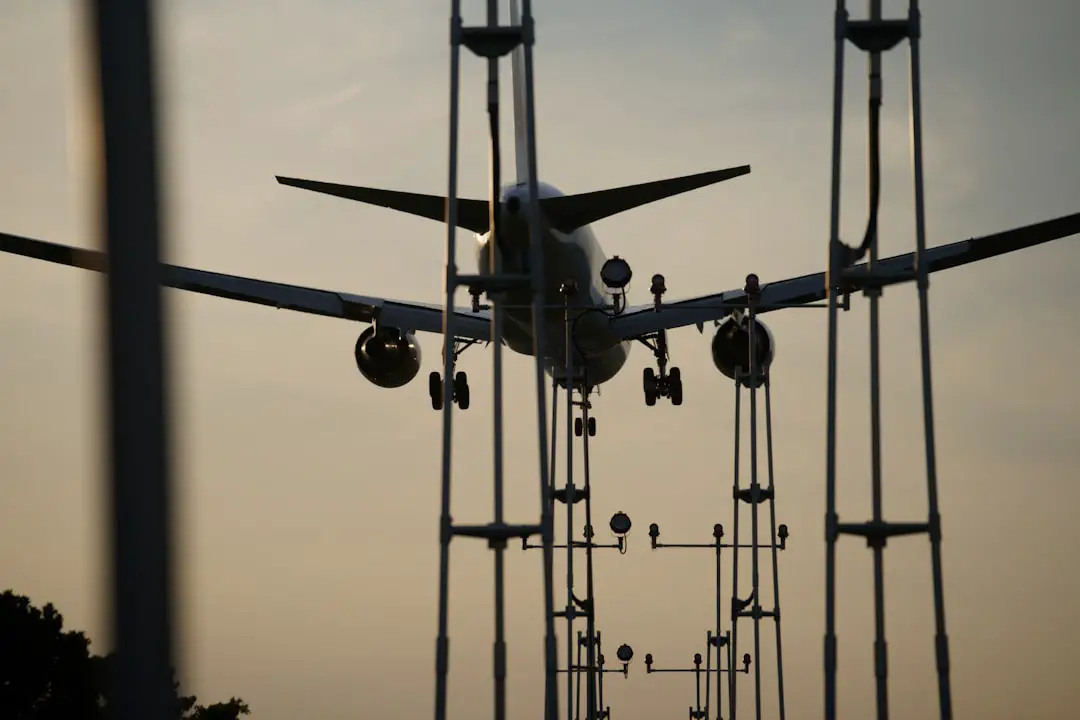Government subsidies in the airline industry represent a significant intersection of public policy, economic strategy, and global commerce. These financial aids, which can take various forms such as direct cash grants, tax breaks, or loan guarantees, are designed to support airlines in maintaining operations, especially during challenging economic times or crises. The rationale behind these subsidies often hinges on the belief that a robust airline industry is vital for national interests, including economic growth, job creation, and connectivity.
As air travel becomes increasingly integral to global commerce and tourism, the implications of government support for airlines extend beyond mere financial assistance; they touch upon issues of competition, safety, and environmental sustainability. The complexity of government subsidies in the airline sector is further compounded by the diverse motivations behind them. For some governments, subsidizing airlines is a means to stimulate local economies, particularly in regions where air travel is essential for tourism or business.
In other cases, subsidies may be employed as a strategic tool to bolster national carriers against foreign competition. This multifaceted nature of subsidies raises important questions about their long-term impact on the industry and the broader economy. As we delve deeper into the history, types, and implications of these subsidies, it becomes clear that they are not merely financial instruments but rather pivotal elements that shape the landscape of global aviation.
Key Takeaways
- Government subsidies in the airline industry have a long history and continue to be a topic of debate.
- There are various types of government subsidies for airlines, including direct financial assistance, tax breaks, and infrastructure support.
- The debate over government subsidies for airlines includes arguments for economic development, job creation, and regional connectivity, as well as concerns about unfair competition and market distortion.
- Transparency and accountability in government subsidies are crucial for ensuring fair competition and preventing misuse of public funds.
- Government subsidies can impact airline competition, safety, security, and the environment, and their future outlook is subject to potential changes and challenges.
History of Government Subsidies for Airlines
The history of government subsidies for airlines can be traced back to the early days of commercial aviation. In the United States, the Air Mail Act of 1925 marked one of the first instances where the government provided financial support to airlines, facilitating the growth of a fledgling industry. This act allowed private companies to bid for contracts to carry mail, effectively laying the groundwork for commercial air travel.
Over the decades, as air travel became more accessible to the general public, governments recognized the strategic importance of maintaining a viable airline industry. The post-World War II era saw a surge in government involvement, with many nations establishing national carriers that received substantial financial backing. In Europe, the establishment of flag carriers was often accompanied by significant state support.
For instance, British Airways and Air France were both heavily subsidized during their formative years. The rationale was clear: governments sought to ensure that their national airlines could compete on an international stage while also providing essential services to their citizens. However, this practice has not been without controversy.
As globalization progressed and low-cost carriers emerged in the late 20th century, the dynamics of airline competition shifted dramatically. The rise of budget airlines challenged traditional models and prompted debates about the fairness and sustainability of government subsidies.
Types of Government Subsidies for Airlines

Government subsidies for airlines can be categorized into several distinct types, each serving different purposes and having varying implications for the industry. Direct financial assistance is perhaps the most straightforward form of subsidy. This can include cash grants or loans that help airlines cover operational costs during periods of financial distress.
For example, during the COVID-19 pandemic, many governments around the world implemented emergency funding programs to support airlines facing unprecedented drops in passenger demand.
This form of subsidy can significantly lower operating expenses and enhance competitiveness. Additionally, some governments provide infrastructure support by investing in airport facilities or air traffic control systems that benefit airlines directly. Such investments can improve efficiency and reduce delays, ultimately enhancing the overall travel experience for passengers.
Moreover, there are indirect subsidies that manifest through regulatory frameworks or policies that favor certain airlines over others. For instance, some countries may impose restrictions on foreign carriers while providing preferential treatment to national airlines. This can create an uneven playing field where subsidized airlines enjoy advantages that are not available to their competitors.
Understanding these various types of subsidies is crucial for analyzing their impact on market dynamics and competition within the airline industry.
The Debate: Arguments for and Against Government Subsidies
| Arguments for Government Subsidies | Arguments against Government Subsidies |
|---|---|
| 1. Encourages economic growth and development | 1. Distorts market forces and competition |
| 2. Supports struggling industries and businesses | 2. Creates dependency on government aid |
| 3. Promotes innovation and research | 3. Wastes taxpayer money on inefficient industries |
| 4. Helps maintain employment levels | 4. Can lead to unfair advantages for subsidized businesses |
The debate surrounding government subsidies in the airline industry is multifaceted and often contentious. Proponents argue that these subsidies are essential for ensuring a stable and competitive airline sector. They contend that without government support, many airlines would struggle to survive during economic downturns or crises like natural disasters or pandemics.
Supporters also highlight the broader economic benefits that arise from a thriving airline industry, including job creation and increased tourism revenue. By maintaining a robust airline network, governments can facilitate trade and enhance connectivity between regions. On the other hand, critics argue that government subsidies distort market competition and create inefficiencies within the industry.
They assert that when airlines rely on public funds to stay afloat, it diminishes their incentive to operate efficiently or innovate. This reliance can lead to a cycle where poorly performing airlines continue to receive support at the expense of more efficient competitors. Furthermore, critics raise concerns about transparency and accountability in how subsidies are allocated and managed.
They argue that without proper oversight, there is a risk of mismanagement or favoritism in distributing funds. The debate also extends to international relations, as countries may engage in subsidy wars to protect their national carriers from foreign competition. This can lead to tensions between nations and complicate trade agreements.
As such, understanding both sides of this debate is crucial for policymakers seeking to navigate the complex landscape of government subsidies in aviation.
Transparency and Accountability in Government Subsidies
Transparency and accountability are critical components in the discussion surrounding government subsidies for airlines. Given the significant amounts of public funds involved, there is a pressing need for clear reporting mechanisms that outline how subsidies are allocated and utilized by airlines. Without transparency, there is a risk that funds may be misused or directed toward inefficient operations rather than fostering genuine growth or innovation within the industry.
Governments must establish robust frameworks for monitoring and evaluating the impact of subsidies on airline performance and market dynamics. This includes setting clear criteria for eligibility and performance metrics that airlines must meet to qualify for continued support. For instance, some countries have implemented requirements for airlines to demonstrate improvements in operational efficiency or customer service as a condition for receiving ongoing subsidies.
Such measures not only promote accountability but also ensure that public funds are being used effectively. Moreover, international organizations like the International Air Transport Association (IATA) have called for greater transparency in government subsidies to level the playing field among global carriers. By encouraging countries to disclose subsidy amounts and conditions publicly, stakeholders can better assess their impact on competition and market health.
Ultimately, fostering transparency and accountability in government subsidies is essential for building trust among consumers, investors, and policymakers alike.
Impact of Government Subsidies on Airline Competition

The impact of government subsidies on airline competition is profound and multifaceted. On one hand, subsidies can provide struggling airlines with much-needed financial support during challenging times, allowing them to maintain operations and preserve jobs. This can be particularly important in regions where air travel is essential for economic connectivity or tourism development.
For instance, smaller regional carriers often rely on government support to serve routes that may not be profitable without assistance. However, on the flip side, government subsidies can create an uneven playing field where subsidized airlines gain an unfair advantage over their competitors. When national carriers receive substantial financial backing while low-cost or foreign airlines do not have access to similar support, it can stifle competition and innovation within the industry.
This dynamic can lead to market consolidation as weaker players are unable to compete effectively against subsidized giants. Furthermore, long-term reliance on government support can hinder an airline’s ability to adapt to changing market conditions or consumer preferences. Airlines that do not face competitive pressures may become complacent in their operations, leading to stagnation in service quality or efficiency improvements.
As such, while government subsidies may provide short-term relief for struggling airlines, they can also have detrimental effects on competition and overall market health in the long run.
Case Studies: Examples of Government Subsidies in the Airline Industry
Examining specific case studies provides valuable insights into how government subsidies have shaped the airline industry across different regions and contexts. One notable example is Qatar Airways, which has faced scrutiny over its substantial state support from the Qatari government. Critics argue that this backing allows Qatar Airways to offer lower fares than its competitors while expanding aggressively into international markets.
The airline’s rapid growth has raised concerns among other carriers about unfair competition practices fueled by state aid. In contrast, consider the case of American Airlines during the COVID-19 pandemic when it received billions in federal aid through programs like the Payroll Support Program (PSP). This assistance was aimed at preserving jobs and ensuring continuity in air travel services during a time of unprecedented disruption.
While this support helped American Airlines weather the storm temporarily, it also sparked debates about whether such bailouts should come with conditions related to operational efficiency or environmental sustainability. Another illustrative case is that of Air France-KLM Group, which received significant state aid during various crises over the years. The French government’s intervention has been justified as necessary for maintaining a national carrier capable of competing globally while providing essential connectivity within Europe.
However, this has also led to discussions about how such support influences market dynamics within Europe’s aviation sector.
The Role of Government Subsidies in Airline Safety and Security
Government subsidies play a crucial role in enhancing safety and security within the airline industry. Safety regulations are stringent across most countries; however, compliance with these regulations often requires significant investment from airlines in training programs, maintenance procedures, and technology upgrades. Government support can help alleviate some of these financial burdens by providing funding for safety initiatives or infrastructure improvements at airports.
For instance, many governments allocate funds specifically aimed at improving airport security measures following events like 9/11 or other security threats. These investments not only enhance passenger safety but also bolster public confidence in air travel as a secure mode of transportation. Additionally, governments may subsidize training programs for airline personnel focused on safety protocols or emergency response procedures.
However, there is an ongoing debate about whether reliance on government funding could inadvertently lead some airlines to prioritize financial considerations over safety standards. If an airline becomes overly dependent on subsidies without sufficient accountability measures in place, it may neglect necessary investments in safety infrastructure or training programs due to complacency stemming from guaranteed financial support.
Environmental Impacts of Government Subsidies for Airlines
The environmental implications of government subsidies for airlines are increasingly coming under scrutiny as concerns about climate change intensify globally. While subsidies may provide short-term economic relief for airlines, they can also perpetuate practices that contribute significantly to greenhouse gas emissions from aviation—a sector known for its substantial carbon footprint. For example, many governments continue to subsidize fossil fuel consumption through tax breaks or exemptions on aviation fuel taxes.
This practice effectively lowers operational costs for airlines but undermines efforts toward sustainable aviation practices by encouraging continued reliance on traditional fuel sources rather than investing in cleaner alternatives like biofuels or electric aircraft technology. Conversely, some governments are beginning to recognize this challenge and are implementing policies aimed at promoting sustainability within aviation through targeted subsidies for green initiatives—such as funding research into alternative fuels or incentivizing airlines to adopt more fuel-efficient technologies. These efforts reflect a growing awareness that supporting environmental sustainability within aviation is not only beneficial for public health but also essential for ensuring long-term viability within an increasingly eco-conscious global economy.
Future Outlook: Potential Changes in Government Subsidies for Airlines
As we look toward the future of government subsidies in the airline industry, several trends suggest potential changes on the horizon driven by evolving economic conditions and societal expectations regarding sustainability and accountability. One significant factor influencing this landscape will be ongoing discussions around climate change mitigation efforts—particularly as governments worldwide commit to reducing carbon emissions under international agreements like the Paris Accord. In response to these pressures, we may see a shift toward more conditional forms of subsidy allocation—wherein financial support is tied explicitly to performance metrics related to environmental sustainability or operational efficiency rather than simply providing blanket assistance regardless of outcomes achieved by individual carriers.
Additionally, advancements in technology could reshape how governments approach subsidy programs within aviation—enabling more targeted interventions based on real-time data analytics regarding passenger demand patterns or operational performance metrics across different carriers operating within specific markets. Furthermore, increased public scrutiny regarding transparency will likely drive demands for greater accountability measures surrounding subsidy allocations—pushing governments toward more rigorous reporting requirements aimed at ensuring taxpayer funds are utilized effectively while promoting fair competition among airlines operating domestically and internationally alike.
The Complex Reality of Government Subsidies for Airlines
The landscape surrounding government subsidies in the airline industry is characterized by complexity and nuance—reflecting a delicate balance between economic necessity and competitive fairness amid evolving global challenges such as climate change and public health crises like COVID-19 pandemic disruptions experienced recently across various sectors worldwide including aviation itself. As stakeholders navigate this intricate terrain moving forward—policymakers must consider not only immediate economic impacts but also long-term implications associated with fostering sustainable practices within aviation while ensuring equitable competition among carriers operating under diverse regulatory frameworks across different jurisdictions globally. Ultimately—the future trajectory of government subsidies will depend heavily upon collaborative efforts among governments—airlines—and consumers alike—to forge pathways toward more resilient—and environmentally responsible—aviation systems capable of meeting both current demands while anticipating future challenges ahead.
Airlines around the world have been receiving government subsidies to stay afloat during the COVID-19 pandemic. These subsidies have sparked debates about the fairness of government intervention in the airline industry. Some argue that these subsidies are necessary to prevent widespread job losses and economic collapse, while others believe that they give an unfair advantage to certain airlines. For more information on the impact of government subsidies on airlines, check out this related article.
FAQs
What are government subsidies for airlines?
Government subsidies for airlines are financial assistance provided by the government to support the operations of airlines. These subsidies can come in the form of direct cash payments, tax breaks, or other forms of financial support.
Do all airlines receive government subsidies?
Not all airlines receive government subsidies. The extent to which airlines receive subsidies varies by country and can depend on factors such as the airline’s ownership structure, the level of competition in the market, and the overall economic and political climate.
Why do governments provide subsidies to airlines?
Governments provide subsidies to airlines for a variety of reasons, including promoting economic development, supporting national security interests, and ensuring connectivity to remote or underserved regions. Subsidies may also be provided to help airlines weather economic downturns or other unforeseen challenges.
How do government subsidies impact the airline industry?
Government subsidies can have a significant impact on the airline industry. They can help airlines expand their routes, invest in new aircraft, and improve infrastructure. However, subsidies can also distort competition and create an uneven playing field for airlines that do not receive government support.
Are government subsidies for airlines controversial?
Yes, government subsidies for airlines are often controversial. Critics argue that subsidies can lead to inefficiencies, unfair competition, and market distortions. Proponents, on the other hand, argue that subsidies are necessary to support essential air services and maintain connectivity in certain regions.
